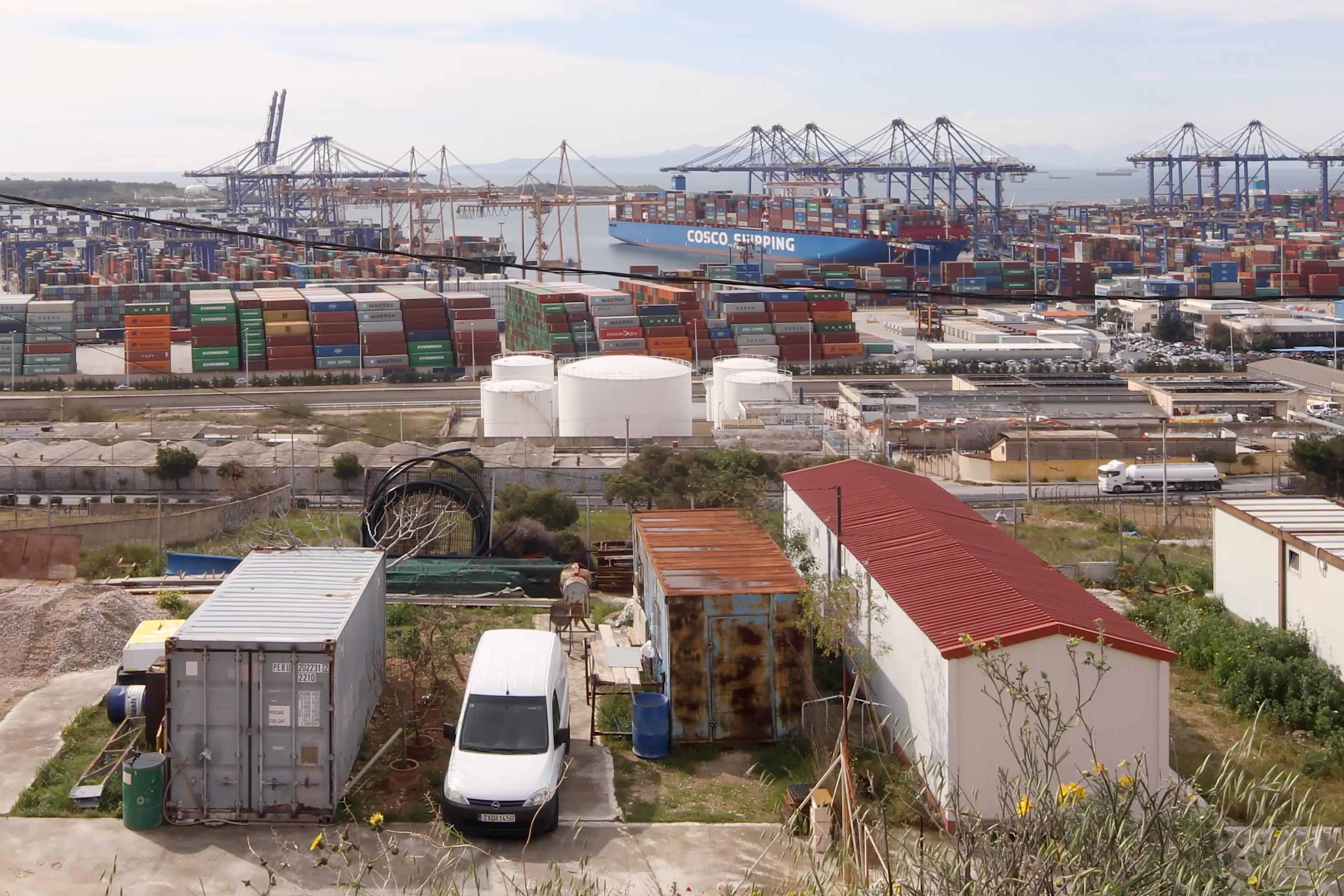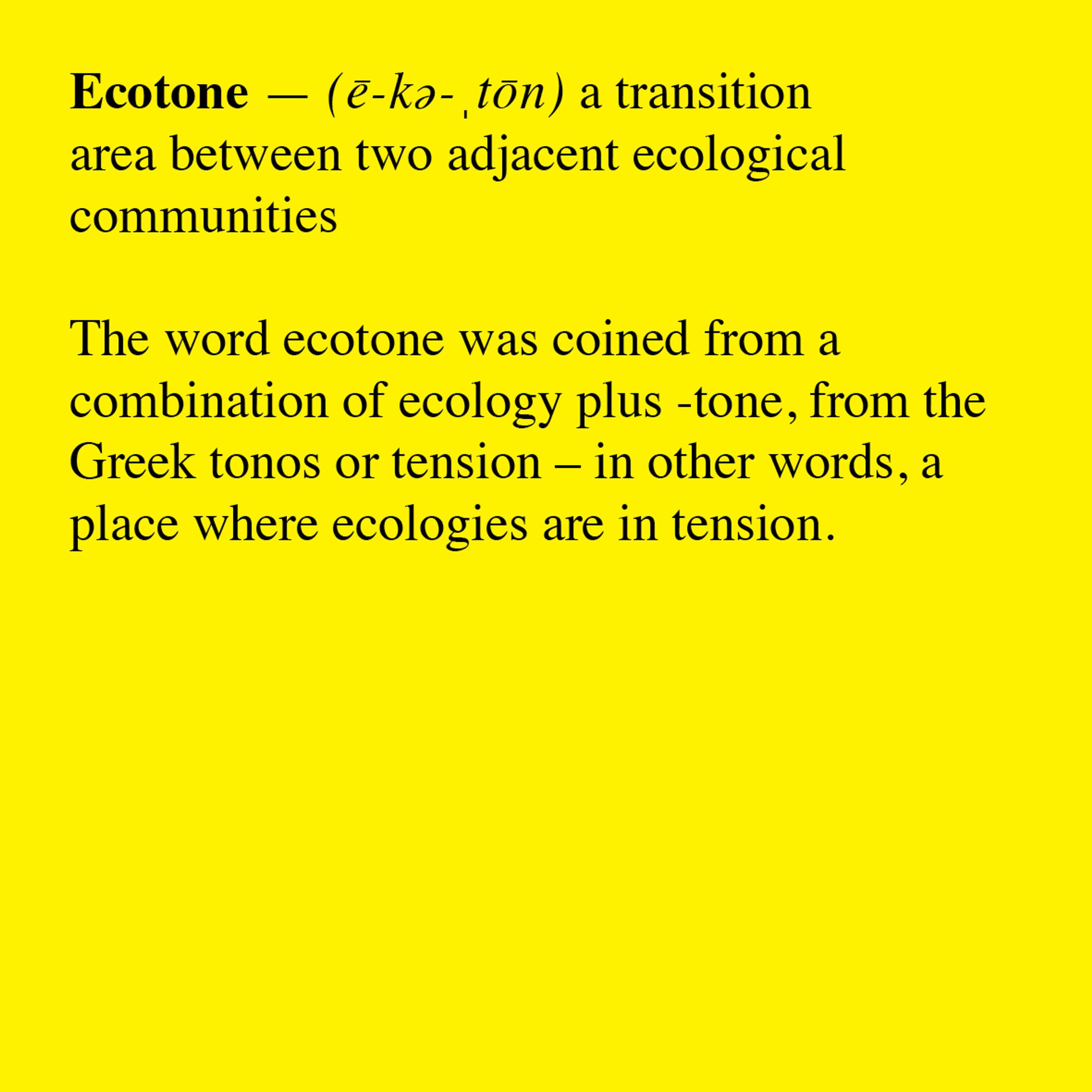Ecotone
An ecotone is a transition area between two biomes, communities of plants and animals that have common characteristics. An ecotone is the place where two communities meet and integrate, resulting in a higher density of organisms and variety of species. This increase in biodiversity is called the “edge effect”. Ecotones may appear as a gradual blending of two or more communities across a broad area, or it may manifest itself as a sharp boundary line.

Urban boundaries: the container terminal of Perama, near Athens, where humans and non-humans live side by side, separated by roads and fences. (Photo: Maxime Delvaux)
Boundaries vs. borders
In an urban context the concept of the ecotone can be used metaphorically to describe those (public) places where different communities meet, diversity increases and mutualistic relationships, in which all involved benefit from the exchange, can be developed. In many cities however, physical infrastructure and political and financial mechanisms increase the spatial fragmentation and social segregation, thus reducing the complexity of a city.
With the NEWROPE Chair for Architecture and Urban Transformation we investigate the potential of design for the creation and preservation of urban ecotones to increase diversity in cities across Europe, from the infrastructure space separating the port of Piraeus from the adjacent neighborhoods to the humans/non-human divide in the Palace of Brigades and surrounding garden in Tirana.
Boundaries vs. borders
According to sociologist Richard Sennett* “the boundary/wall dominates the modern city. The urban habitat is cut up into segregated parts by streams of traffic, by functional isolation between zones for work, commerce, family, and the public realm. The most popular form of new residential development internationally, the gated community, takes to an extreme the idea of the boundary wall. The result is that exchange between different racial, ethnic, or class communities diminishes. So we should want to build the border/membrane.”
Sennett illustrates his ideas by referring to paleontologist and evolutionary biologist Steven J. Gould, “who drew our attention to an important distinction in natural ecologies between two kinds of edges: boundaries and borders. The boundary is an edge where things end; the border is an edge where difference groups interact. At borders, organisms become more inter-active, due to the meeting of different species or physical conditions; for instance, where the shoreline of a lake meets solid land is an active zone of exchange where organisms find and feed off other organisms. Not surprisingly, it is also at the borderline where the work of natural selection is the most intense. Whereas the boundary is a guarded territory, as established by prides of lions or packs of wolves. No transgression at the boundary: Keep Out! Which means the edge itself is dead.”
* Richard Sennett, Building and Dwelling, Ethics for the City, Penguin Books Ltd, 2019

Image source: F. Lamiot, Wikipedia
This Image is a schematic representation of different types of ecotones on a square surface. In each case, yellow and green surfaces (schematically two different ecological habitats, eg the savannah and forest, or forest and water, or... ) are similar, but the length of the ecotone between them varies greatly from case to case. Note on the impact of the "pattern" of each patch of "color" on the "percolation capacities" of certain species in the landscape ; (compared to the surface considered). Fig.1 & 2 show simple ecotones with equal and homogeneous surfaces in both cases. Fig.3 shows an inclusion of each medium in the other, creating multiple ecotones, which are shown in a more complex form in figure 4. Fig. 5 & 6 show the edges of forests or banks treated in such a way as to lengthen the ecotone considerably without excessively modifying the environment. Fig.7 shows a common interpenetration of media (such as that found at the edge of a forest). Fig.8 shows an ecotone that could have been formed by an animal modifying its environment.
